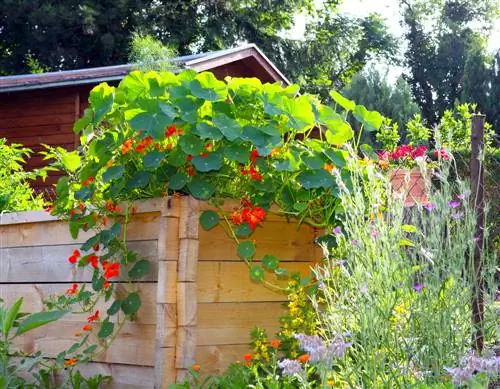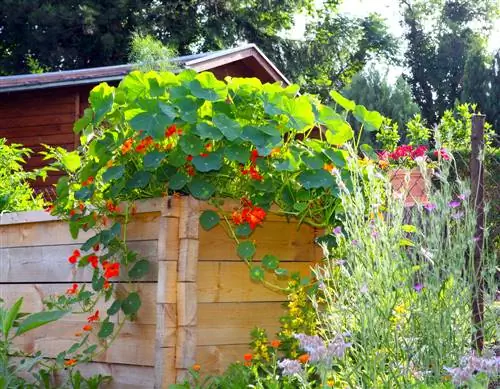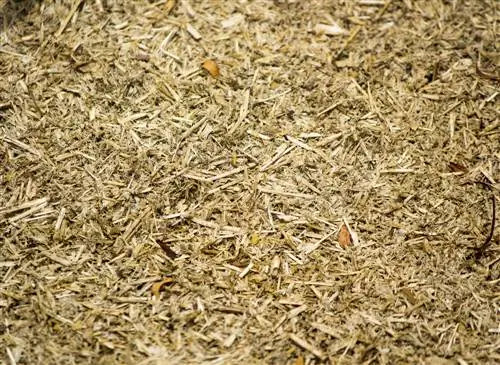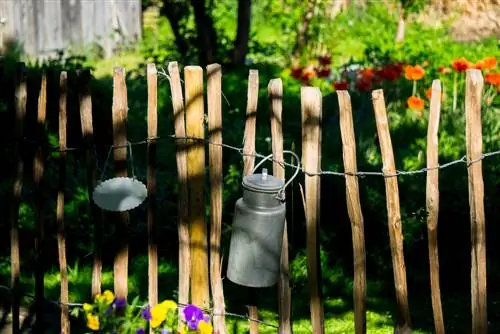- Author admin [email protected].
- Public 2023-12-16 16:46.
- Last modified 2025-01-23 11:21.
Of course, such a raised bed box can be placed in the middle of the garden. You can also use it to structure your garden - as well as to replace a fence or wall for the purpose of demarcating property. A raised bed can also be used well to prevent a high fence or wall from appearing too powerful and to still be able to use the garden space in front of it sensibly.

How can a raised bed be designed as a fence or property boundary?
A raised bed as a fence or property boundary offers privacy and attractive planting. Create a 70-80 cm wide bed made of materials such as stone or wood and plant it with perennials, shrubs, tall ornamental grasses or fruit trees. Please observe applicable building regulations and distances from neighboring properties.
Ideas for raised beds as property boundaries
The raised bed can completely or partially replace the property boundary - i.e. be built instead of a fence, wall or hedge - or installed in front of an existing fence to loosen up the area. The length, height and shape are entirely up to your design wishes, but you should not plan the bed to be wider than 70 to a maximum of 80 centimeters. As a rule, you will only be able to process it from three sides - one long side and possibly one or both short sides - while the second long side is missing. This ultimately serves as a property boundary and is either on the border with the neighbor or directly on a fence or wall. When it comes to choosing materials, it is advisable to use materials that are already available - so put a stone raised bed in front of a stone wall, a wooden bed in front of a wooden fence, etc.
Plant a raised bed as a privacy screen
If the neighbor doesn't want to be able to see the terrace, the border-defining raised bed can also be planted as a privacy screen. Various perennials, shrubs and even tall summer flowers are suitable for this. In higher beds, plants that would be too low for this purpose at ground level are also suitable as privacy screens. For example,would be suitable
- bushy herbs such as lavender, hyssop, rosemary, oregano and sage
- long-flowering perennials such as Indian nettle (Monarda) or delphinium
- tall ornamental grasses such as the garden riding grass
- various fruit trees (e.g. berry bushes, columnar fruit)
When planting, pay attention to the filling of the raised bed: You cannot use a compost raised bed for perennial perennials and shrubs because it will sink too much. Instead, fill in suitable humus and potting soil, mixed with mature compost and horn shavings (€52.00 on Amazon).
Observe applicable building regulations
If you want to use a raised bed instead of a fence or other property boundary, you may need to comply with applicable building regulations. These are regulated either in the municipal statutes or in state law, and in the case of allotment gardens also in their statutes. So you have to
- maintain certain distances from neighboring property
- ensure that no soil or plant material from the raised bed gets onto the neighboring property
- obey any existing rules for compost heaps (due to a possible rat infestation).
A building permit is usually not required for a raised bed, as it can be dismantled at any time.
Tip
If possible, build a stable raised bed that will not rot within a few years and then need to be replaced. For example, stone raised beds or those with a gabion border are very suitable.






